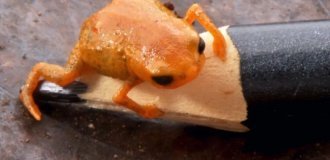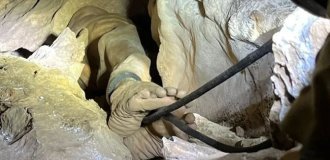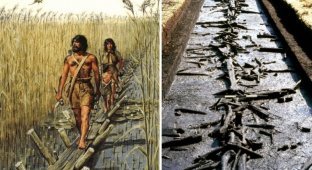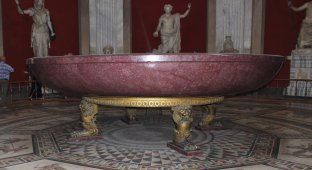Battle axes of ancient Japan (3 photos)
Battle axes and poleaxes were not widely used in Japan. This is most likely due to the fact that at some point in history the Japanese did not have heavy plate armor that required such powerful and heavy weapons. 
However, there were battle axes in Japan. For example, early stone axes "raifu" (possibly Ainu axes) and later iron axes "fuetsu" have been preserved in museums.
However, the most famous battle axe is undoubtedly the "masakari", which has a truly huge, up to two meters long shaft (axe handle) and a heavy semicircular tip with a massive butt. It is noteworthy that the thickness of the working part of the masakari and the butt were practically the same, the axe was reduced to the blade closer to the end, which is why the weapon acquired a characteristic plump appearance. 
Images of warriors armed with masakari can be found in drawings reflecting the Kamakura period (1185-1333) - an era of internecine wars and the dominance of the samurai class.
However, there is no doubt that this masakari was a weapon of a small part of warriors with sufficient physical training. 
The axe called "ono" has a wider blade compared to the masakari, and a less massive butt, which was sometimes made in the form of a scroll. The total length of the "ono" weapon reached 1.8 meters, and the axe was carried in a sheath that covered only the blade.
"Ono" was a favorite weapon of the mountain hermits yamabushi, who used this axe to clear a path through the mountain thickets and, of course, as a weapon of self-defense.
Another purpose of both the "masakari" and "ono" was to break down wooden gates and doors of enemy fortifications.























